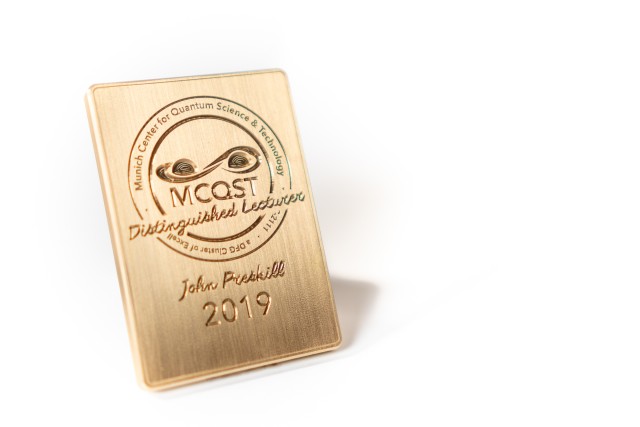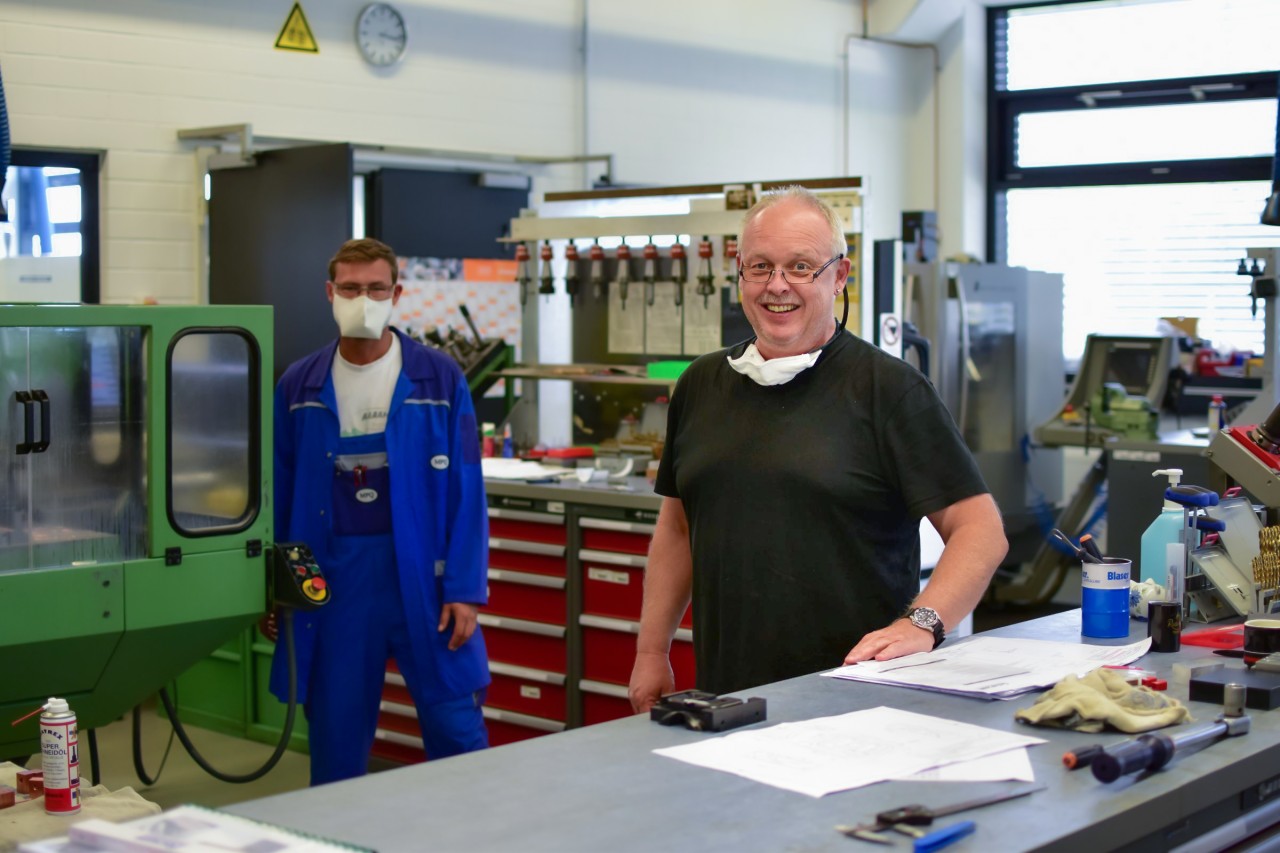Michael Rogg - Max Planck Institute of Quantum Optics
Could you please describe yourself and your connection to MCQST?
My name is Michael Rogg, and I am the manager of the workshop at MPQ. Honestly, I only found out about MCQST last summer, when we manufactured a medal for the MCQST Distinguished Lecturer. Making a metal piece from a simple drawing is not an easy task, but it worked out nicely. Before this project I was not aware that MCQST existed nor that MPQ is part of it. Actually, I am a bit surprised and honored, that you picked me to be part of your advent calendar.

We also want to highlight people working behind the scenes. The MPQ workshop is definitely an important part of MCQST, since many experiments rely on pieces from your workshop. Could you please tell us a bit what you are currently working on? Is there a special piece of equipment that you made recently?
We get assignments from all of the experimental divisions at MPQ, so we work on many projects simultaneously. Recently, we manufactured mounts for coils made from a plastic material for an experiment in the Bloch group. It was a bit tricky to make them, since the mounts are very complex in shape, with thin walls while the material is very soft. Luckily, we have a machine that allows simultaneous processing from five directions, which allowed us to finish it with only a final cut at the end to release the piece from its supporting structure. Afterwards, the coils were twisted and we had to remove the core without a good way to fix the piece. We managed in the end!
The most challenging project was the centrifuge for slowing molecules from the Rempe division. In this piece of equipment more than 1800 hours have been invested by a single person only working for this project for about 1.5 years. We are very proud of the result, the piece fulfilled all requirements and, once installed, worked perfectly from the first minute until today!
What was your most challenging project until now?
The most challenging job I did in my career was to act as responsible from the institutes side for the new workshop building while still managing the manufacturing projects at the workshop. It is incredible how time consuming it is to plan and oversee the construction work for such a building. Alone the communication with the architects accumulated to more than 600 hours. At the same time, I had to manage the workshop and keep it running. This was an enormous double load.
Concerning the most challenging manufacturing project, it was the centrifuge for slowing molecules from the Rempe division. In this piece of equipment more than 1800 hours have been invested by a single person only working for this project for about 1.5 years. We are very proud of the result, the piece fulfilled all requirements and, once installed, worked perfectly from the first minute until today! It is a very special piece, and we also got requests to rebuild is it for a research group in the US. However, at the end the price would have been too high, between 300-400 k€. Moreover, I also had concerns about the maintenance of the device. Not every country has are such high standards for its technical staff as Germany.
 © MPQ
© MPQ How does your typical workday look like?
I am responsible for coordinating the work, i.e. I receive orders, assign projects to our staff, and decide who is doing which piece. We are 17 persons in the workshop, which means a lot of organization of who is doing what. Sometimes we also give orders outside to other workshops, e.g., if the number of requested pieces is very high or it is not cost efficient to do it at our workshop. I also purchase the all materials, the equipment and tools necessary for our work. I do all what is necessary to run the workshop efficiently. Unfortunately, all these tasks do not leave me any time to work on the machines myself.
What did change this year? Home office at a workshop does not sound like an option…
At the beginning of the pandemic, we sat together with my team and discussed our options. Together we decided to divide the team in two groups and alternated daily between the groups coming to the workshop. Some of the team members actually where able to work from home: they could program the machines remotely and do the manufacturing the next day at the workshop. My team was very happy about this routine, since then they did not have a full week of downtime. Starting from August, we went back to normal operation. Due to the large space of the workshop and its good air-conditioning system, it is quite easy to keep our distance during working hours.